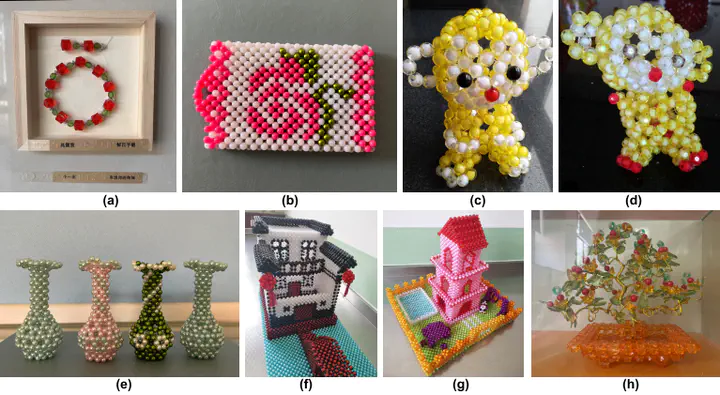Beadwork Bridge: Understanding and Exploring the Opportunities of Beadwork in Enriching School Education for Blind and Low Vision (BLV) People

Abstract
Tactile perception is a crucial channel for education in individuals with blindness and low vision (BLV), and beadwork is a low-cost and widely adopted tool in their educational practices. In this paper, we aim to explore what the feld of Human-Computer Interaction (HCI) can learn from beadwork practices in relation to educational somatic experiences and tangible interaction. To understand how beadwork practices are enacted, we conducted in-class observations, semi-structured interviews, and focus groups with BLV students and teachers. Our results suggest that beadwork is an efective tool to foster personal development (e.g., mathematical and creativity skills) and social engagement (e.g., career development). Based on our fndings, we ofer insights into how beadwork can serve as a cost-efective material for HCI, particularly in the context of embodied cognition and soma design. Finally, we propose how stateof-the-art technology could be integrated to optimize the overall process.